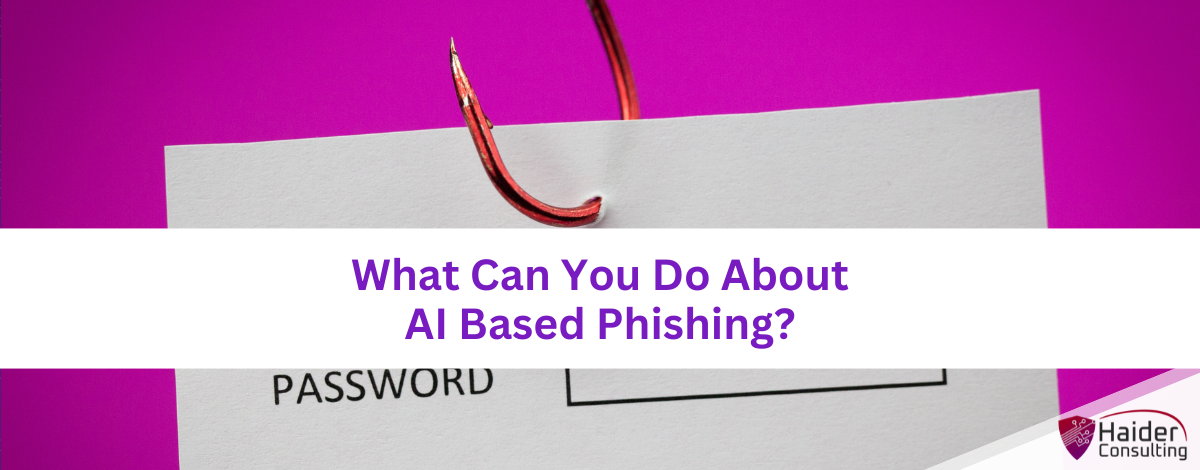Phishing has always been a risk, but now with AI, it’s evolved. We’re facing Phishing 2.0—smarter, more convincing, and tougher to spot. It’s vital to understand this upgraded threat.
Recent research shows a 60% surge in AI-powered phishing attacks, signaling that phishing is intensifying. Let’s explore how AI is escalating phishing dangers and how you can safeguard against them.
The Evolution of Phishing
Phishing started out with attackers sending out many emails, hoping to trick at least a few people. These early attempts were often obvious, with bad grammar and clear falsehoods, making them easy to spot.
However, phishing has become more sophisticated over time. Now, attackers use AI to create more convincing emails and to target specific individuals, making their attempts much harder to recognize.
How AI Enhances Phishing
Creating Realistic Messages
AI can process vast amounts of data to learn how people communicate. This allows it to generate phishing messages that seem very realistic, mimicking the style and tone of genuine communications, which makes them harder to detect.
Personalized Attacks
AI can pull information from social media and other sources to craft messages tailored to individuals. These messages may include specific details about your job, hobbies, or recent activities, making them seem more credible and increasing the likelihood that you will trust them.
Spear Phishing
Spear phishing is a targeted form of phishing that goes after specific individuals or organizations. It’s more advanced than typical phishing. AI enhances spear phishing by enabling attackers to deeply research their targets and craft messages that closely resemble legitimate ones, making them harder to identify.
Automated Phishing
AI can automate many aspects of phishing, allowing attackers to send out thousands of messages quickly and tailor their approach based on how recipients respond. For example, if someone clicks a link but doesn’t provide information, AI can prompt a follow-up email, improving the chances of tricking the recipient.
Deepfake Technology
Deepfakes, created by AI, are realistic fake videos or audio recordings. In phishing attacks, attackers might use a deepfake video of a company CEO asking for sensitive information, adding a new level of deception and making the phishing attempt much more believable.
The Impact of AI on Phishing
Increased Success Rates
AI-enhanced phishing attacks are more convincing, leading to higher success rates. As a result, more people are tricked, increasing the occurrences of data breaches, financial losses for companies, and personal issues like identity theft for individuals.
Harder to Detect
AI-enhanced phishing attacks are more difficult for traditional detection methods to spot. Spam filters often fail to catch them, and employees might not realize they are threats. This difficulty in detection allows attackers to succeed more easily.
Greater Damage
Phishing attacks that use AI can be more damaging. They often target specific individuals to access sensitive data. This can lead to substantial breaches, exposing personal and company information and disrupting daily operations. The effects of such attacks can be severe and widespread.
How to Protect Yourself
Be Skeptical
Always question unexpected messages, even from sources that seem trustworthy. Verify who sent them before you click any links or download attachments.
Check for Red Flags
Watch for warning signs in emails, like vague greetings, urgent demands, or requests for personal details. If an email offer looks too good to be true, it probably is.
Use Multi-Factor Authentication (MFA)
Enable MFA to enhance your security. This way, even if someone gets your password, they won’t have easy access to your accounts without additional verification.
Educate Yourself and Others
Education is vital. Learn about common phishing tactics and stay updated on new threats. Share what you learn to help others recognize and avoid phishing attacks.
Verify Requests for Sensitive Information
Always double-check before sharing sensitive information through email. If you get a suspicious request, confirm it using another method, like a phone call to a number you trust.
Use Advanced Security Tools
Invest in sophisticated security tools. Anti-phishing programs and email filters can spot and stop phishing attempts. Always keep your security tools updated for the best protection.
Report Phishing Attempts
If you encounter a phishing attempt, report it to your IT department or email service provider. This allows them to enhance security measures and prevent similar threats to others.
Enable Email Authentication Protocols
Use email authentication protocols like SPF, DKIM, and DMARC to guard against email spoofing. Activating these on your domain strengthens your email security.
Regular Security Audits
Carry out regular security audits to spot and fix vulnerabilities in your systems. Taking a proactive approach like this helps avert phishing attacks.
Need Help with Advanced Phishing Protections?
Phishing has evolved, and AI is making these threats even trickier and more convincing. If you haven’t checked your email security recently, it might be time for a review.
Get in touch with us today to talk about enhancing your protection against phishing.
Book My 17-Minute Call





